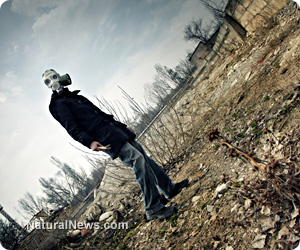|
In an interview with the Guardian, the man in charge of Japan's Fukushima Daiichi nuclear power plant has warned that a similar disaster could easily befall any of the world's nuclear power plants.
Commenting on the United Kingdom's plans to build a new generation of nuclear plants in Somerset, Tokyo Electric Power Company (TEPCO) president Naomi Hirose said that the British nuclear power industry needs to be "prepared for the worst."
"What happened at Fukushima was, yes, a warning to the world," he said.
Following a 9.0 earthquake and tsunami in 2011, the Fukushima plant suffered a triple meltdown and the worst nuclear accident the world had seen since the 1986 Chernobyl meltdown. Nearly three years later, the Fukushima site continues to contaminate Japan's air, land and water, and may even continue to cause health problems as far away as California.
Hirose encouraged nuclear power operators to try and think of any possible thing that could go wrong and plan for it, noting that a few extra simple safety measures could have prevented the Fukushima disaster.
"Try to examine all the possibilities, no matter how small they are, and don't think any single counter-measure is foolproof," he said. "Think about all different kinds of small counter-measures, not just one big solution. There's not one single answer.
"We made a lot of excuses to ourselves ... Looking back, seals on the doors, one little thing, could have saved everything."
But even with such preparations, he warned, it is a mistake to ever think of nuclear power as 100 percent safe - no matter what the nuclear industry might claim.
"We have to explain, no matter how small a possibility, what if this [safety] barrier is broken?" he said. "We have to prepare a plan if something happens ... It is easy to say this is almost perfect so we don't have to worry about it. But we have to keep thinking: what if ..."
Ongoing risks
Hirose's comments came as the Fukushima plant's operators are working to remove highly radioactive fuel rods from one of the damaged reactors, a process expected to take at least a year. Completely decommissioning the plant is expected to take decades.
Removing the 1,500 fuel rods from Reactor No. 4, which was seriously damaged by explosions early in the meltdown, is considered a highly dangerous procedure. Experts have warned that, if any of the rods break or are even allowed to come into contact with air, they could release huge amounts of radioactive gas into the atmosphere.
These warnings were given new urgency with a recent study published in the Open Journal of Pediatrics, which found that radioactive iodine released by the Fukushima explosion led to an increase in congenital thyroid diseases among newborns in California, more than 5,000 miles away.
Congenital hypothyroidism typically affects roughly one in 2,000 children. Because untreated children can suffer from serious growth problems, the state of California monitors all newborns for abnormal thyroid levels. Using these records, researchers from the Radiation and Public Health Project and Jacobs University, Bremen, found that children who had been exposed to radioactive iodine from Fukushima while in the womb were 21 percent more likely to suffer from confirmed hypothyroidism and 27 percent more likely to suffer from a borderline case.
After the Fukushima meltdown, winds blew most of the plant's volatile radionuclides westward toward the Pacific Ocean. Industry spokespeople claimed that, because the land in that direction was so far away, there should be few health effects. Nevertheless, radioactive I-131 shortly began showing up in California milk samples.
Despite other industry claims, research shows that the amount of radioactive contamination produced by the Fukushima meltdown is comparable to that from the Chernobyl disaster.
Sources for this article include:
http://www.telegraph.co.uk
http://www.telegraph.co.uk
http://www.theecologist.org
http://science.naturalnews.com


Comments